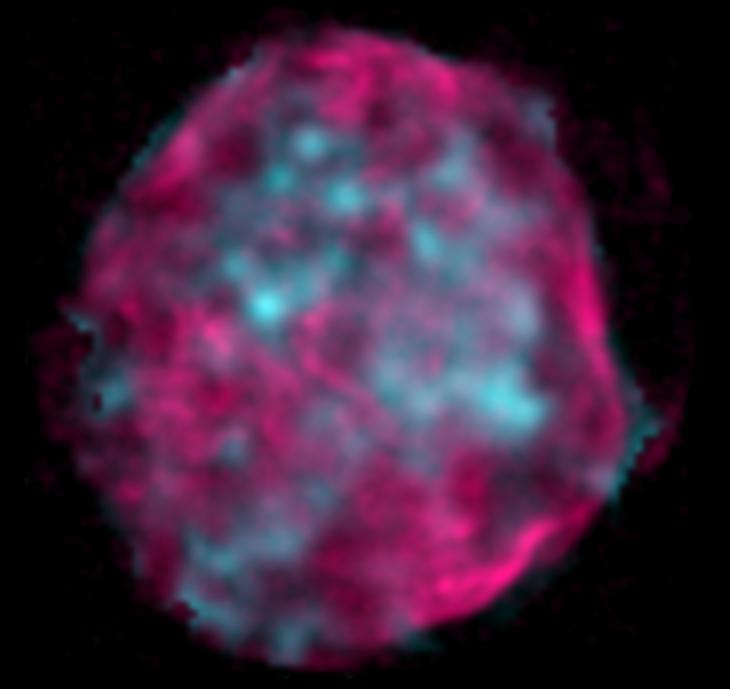
 Credit: NASA/CXC/Penn State/S.Park et al.
Credit: NASA/CXC/Penn State/S.Park et al.
A Galactic Recommended Allowance of Mg
Many important chemicals are cooked up inside stars. These chemicals get dispersed into space by a star's wind, and finally when the star explodes. Astronomers believe they understand the basic picture of how this occurs, but sometimes surprises are discovered. A recent X-ray image by the Chandra X-ray observatory of the supernova remnant N49B showed unexpectedly bright emission from the element magnesium, suggesting exceptionally large amounts of magnesium were produced by the progenitor star. In the image above, the regions where magnesium is particularly abundant, and X-ray emission from magnesium ions particularly strong, are shown in bluish-green, while the X-ray emission from the rest of the remnant is pink. Large amounts of magnesium should be accompanied by proportionally large amounts of oxygen, but N49B seems to have normal amounts of oxygen. The large amounts of magnesium relative to oxygen is a real puzzle: perhaps something happened to remove the oxygen in this nebula?
Last Week *
HEA Dictionary * Archive
* Search HEAPOW
* Education
Each week the HEASARC
brings you new, exciting and beautiful images from X-ray and Gamma ray
astronomy. Check back each week and be sure to check out the HEAPOW archive!
Page Author: Dr. Michael F. Corcoran
Last modified €


